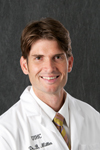Thank you for your interest in joining the Sarcoma ROAR. This project is designed to improve the lives of individuals afflicted by sarcoma, both now and in the future. It is only with the help of people like you that we can, and will, make a real difference. The registry was created and is housed at the University of Iowa, and is open to everyone in North America. This is incredibly exciting as it establishes a continent-wide community of individuals with the common goal of improving quality of life during and after the treatment of sarcoma.
The link “The purpose of the Registry” describes some of the reasoning behind this effort and “The innovation of the Registry” discusses how this project is unique and groundbreaking.
When you are ready to join, click on the link “Join the Registry.” Once you enter your name and email address, we will immediately email you a link to our first survey. Your completion of this survey (about 30 minutes) automatically enrolls you into the registry. We then will mail a form to your home address that we would like you to fill out and mail back (envelope provided). A completed form is consent to allow us to obtain information from your medical record, which we will use to confirm the details of your diagnosis and treatment. This is very important to ensure that we have valid and reportable data and is critical for scientific credibility of the registry. Be assured, no one except the research team will have access to any of your personal identifiers, and we will  not give your information to any third parties.
not give your information to any third parties.
If you have any questions along the way, please do not hesitate to contact us. We are happy to address any concerns or help with any problems you encounter.
Thanks again for your willingness to dedicate your time to this effort.
Ben Miller, MD
Orthopaedic Tumor Surgeon
Why do we need this registry?
Sarcoma is a rare form of cancer, accounting for roughly 1% of all new malignancies in North America. The surgical treatment of sarcoma is complex, and surgeons work hard to find a way to remove the cancer completely, while maintaining or restoring as much function as possible. This registry is a way for the patients who have been diagnosed with a sarcoma to contribute their experiences in a meaningful way, to give a sense of what life was like during treatment and after surgery. We hope that this registry stimulates a community of sarcoma fighters and survivors, and the knowledge gained from everyone’s personal contribution will continue to improve surgical care for future patients.
What does "Patient-Centered" mean?
“Patient-Centered” is a concept implying that the design of a project focuses on the idea that the patients with sarcoma are the most important people in the process and hold the most important information. This registry was designed with the individuals afflicted with sarcoma as the key to its purpose and success. Our primary goal is to improve patient care, and your participation is the most important component.
Who qualifies to join?
Any individual who has been diagnosed with a sarcoma in their arms, legs, or pelvis can join, whether you have not had any treatment yet, you are currently being treated, or you were treated many years ago. It is important that you know some key information to enter into the registry (your doctor or doctor’s office may help you):
1) Where was your tumor?
2) What kind of tumor was it?
3) How big was the tumor?
4) What surgery was done?
5) What was the date of surgery?
If you are interested in joining, we will ask you to fill out an initial survey (less than 30 minutes) to let us know the details of your treatment and how you are doing now. We will then email you follow-up surveys (< 20 minutes) to monitor your progress over time. The follow-up surveys are sent every 3-6 months in the first year after surgery, then just once a year after that. All personal and medical information is kept confidential and will not be revealed to anyone outside the research team.